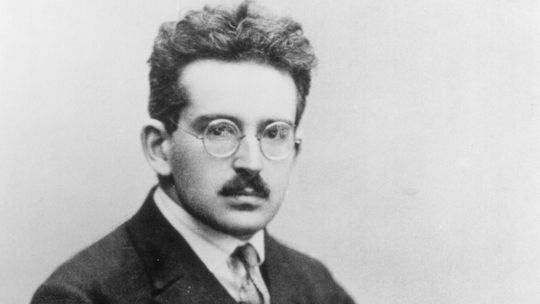During the late 1930’s the philosopher Walter Benjamin wrote its widely influential essay ‘The work of Art in the Age of Its Technical Reproducibility’. While describing a general shift in the arts and their perception and warning about the possible exploitation for political purposes his work examines carefully the medium, especially photography and film, and its sensual aspects.[1] He attributes a tactile and palpable quality to film that elevates the medium and stresses its meaning for the human collective.
Benjamin formulates a historical task of film, ‘which is to gain control over technology and its effects.’[2] For him, film is an exercise for the senses to adapt ourselves. It were the ‘successive changes of scene and focus’ that were ‘a true training ground’ of modern perception.[3] Film thus corresponds to the changes that each passerby experiences in big-city traffic.[4] On the one hand the ‘filmic stimuli transcend the category of purely optical impressions’, on the other hand they stay safely or visually enframed in the screen.[5]
These theories build upon the works of the dadaists and that of art historian Alois Riegl. The works of the dadaists are described for example as sensual ‘projectiles’ that jolted the viewer.[6] Some 40 years earlier the science called the haptics formulated itself which researches the connection of the human senses to the outer world. Nowadays it finds its application in a multitude of disciplines like the social sciences, robotics, virtual interfaces and design.[7] The parallelism between the scientific progression in exploring the senses and Walter Benjamins writings about the media becomes obvious.
Eventually Benjamin itself widens the perspective by opposing technology as a second nature to contemporary society. Humans are no longer mastering this second nature which they now confront and ‘they are just as compelled to undertake an apprenticeship as they were once when confronted with first nature.’ In Benjamins point of view ‘art once again places itself at the service of such apprenticeship - and in particular film.’[9]
Benjamin was thus a forerunner of the idea of Next Nature who centered its attention on the human relationship with technology already 80 years ago. Moreover he attributes an important role the human senses and how the human being experiences its environment in his media analytics. An uplifting implication by Benjamin is that humans always invent new technologies to cope with the ones that they developed previously.
1 Wilke, Tobias. 2010. “Tacti(ca)lity Reclaimed: Benjamin’s Medium, the Avant-Garde, and the Politics of the Senses” Grey Room 39 (Spring), 39-51
2 Wilke, “Tacti(ca)lity” 50.
3 Benjamin, Walter. 1939. “Das Kunstwerk im Zeitalter seiner technischen Reproduzierbarkeit (derde versie),” in Gesammelte Schriften, I, 2, ed. Rolf Tiedemann & Hermann Schweppenhäuser. Frankfurt am Main: Suhrkamp, 1991, 503.
4 Benjamin, “Das Kunstwerk“ in Gesammelte Scriften, I 503.
5 Wilke, “Tacti(ca)lity” 49.
6 Benjamin, Walter. 1936. “Das Kunstwerk im Zeitalter seiner technischen Reproduzierbarkeit (tweede versie),” in Gesammelte Schriften, VII, 1, ed. Rolf Tiedemann & Hermann Schweppenhäuser. Frankfurt am Main: Suhrkamp, 1991, 379.
7 Grunwald, Martin, ed. 2008. Human Haptic Perception: Basics and Applications.
Basel, Boston: Birkhäuser, ix.
8 Benjamin, “Das Kunstwerk“ in Gesammelte Scriften, I 444-445.

cossygoldberg
you mean 'the work of art in the age of mechanical reproduction'?
Posted on